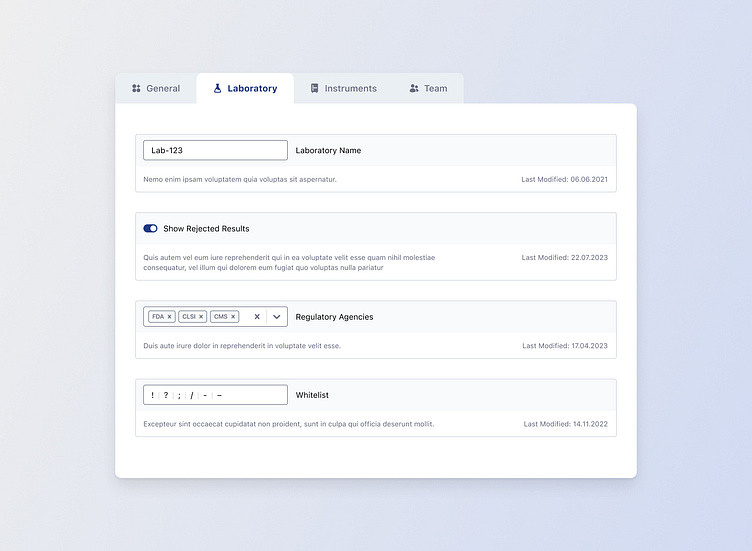Web App Service Configuration
Problem
Laboratory workers required the ability to configure application settings to suit their specific needs. However, the initial system lacked this functionality, forcing users to rely on technical support to make any changes. This resulted in:
• Delayed Configuration: Users had to wait for technical support to process configuration requests, leading to delays in workflow and potential disruptions to testing operations.
• Limited Flexibility: Users were dependent on IT department for even minor configuration changes, limiting their autonomy and control over the application.
• Increased Support Burden: The high volume of configuration requests placed a significant burden on the team, diverting resources from other critical tasks.
Key Question: How can we empower users to make these changes independently?
Why
Research revealed a fundamental disconnect between the application's design and the needs of its users:
• Diversity: The system was designed with a top-down approach, assuming that all users had identical needs and workflows. This failed to account for the diverse requirements of different lab users.
• Lack of User's Customization: The application lacked the necessary mechanisms to allow users to tailor the system to their specific workflows and preferences. This resulted in a rigid and inflexible user experience.
• Misalignment with User Experience: Users expected a modern application to provide basic configuration options. The absence of these options created a negative impression and reduced user satisfaction.
Solution
To address the identified design flaws and empower users with greater control, we implemented a user-centered approach to the "Settings" page:
• Configuration Interface: We designed a dedicated "Settings" page that provides users with clear and intuitive controls to manage various application settings.
• Modular and Adaptable Design: We implemented a constructor component that allows developers to easily add new settings without requiring design intervention. This ensures that the application can adapt to evolving user needs and maintain a consistent user experience as new features and settings are introduced.
• Clear Information Architecture: We organized the settings into logical categories and used clear labels and descriptions to ensure that users can easily find and understand the available options. This improved information architecture addresses the misalignment with user expectations by providing a familiar and intuitive settings experience.
